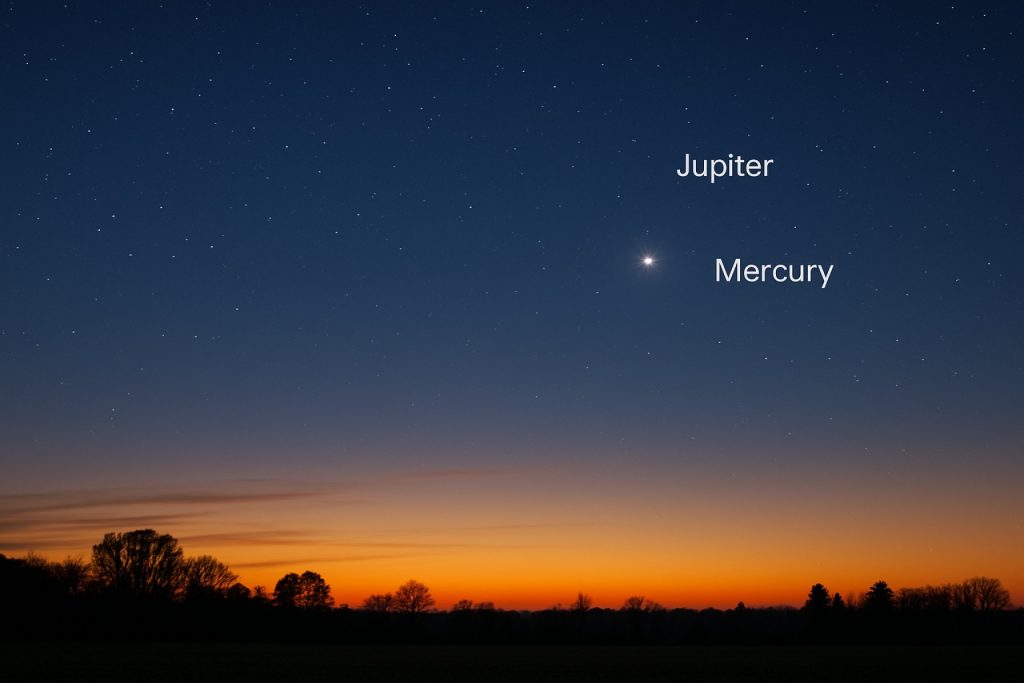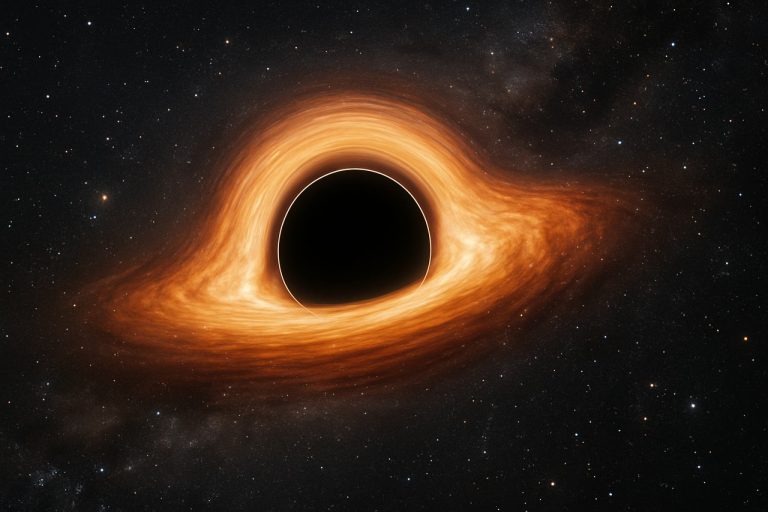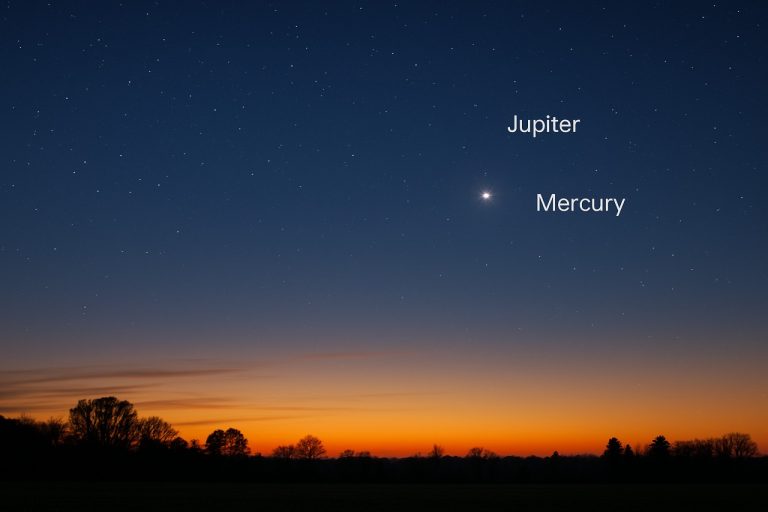
Don’t Miss Tonight’s Dazzling Display: Mercury and Jupiter Meet in a Twilight Sky for 2025’s Most Anticipated Planetary Conjunction
Mercury and Jupiter are set for a rare, breathtaking conjunction tonight—here’s how, when, and where to catch the cosmic spectacle in 2025.
• Visible for just 45 minutes after sunset
• Planets pass within 2° of each other
• Best seen with 10×50 binoculars
• Next event this close: Not until 2028
Skywatchers, get ready for one of 2025’s most breathtaking celestial events! Mercury and Jupiter will appear side-by-side in the twilight, performing a rare conjunction visible only for a fleeting window after sunset. For astronomy fans and casual stargazers alike, this is a can’t-miss sight—a celestial show that won’t repeat for years.
As the sun dips below the horizon, Mercury, the innermost planet, will glide closely past the mighty Jupiter. The pair will come within just over two degrees of each other—so close you could frame both in a single view through standard 10×50 binoculars. This planetary rendezvous is best seen with unobstructed skies and a clear western horizon.
Q: When and Where Should I Look for Mercury and Jupiter?
The magic begins roughly 20-30 minutes after sunset and lasts about 45 minutes before the planets sink below the horizon. Look low in the western sky, slightly above where the sun disappears. Cities and countryside observers alike can catch the event, but rural areas with minimal light pollution offer the most spectacular view.
For precision, use stargazing apps or sky maps from reputable sources like NASA or Sky & Telescope. Binoculars or a small telescope will dramatically enhance your viewing experience, though keen-eyed planet watchers might glimpse the duo with the naked eye if the twilight is clear.
How to Capture Stunning Photos of the Conjunction
Want to immortalize the moment? Use a tripod-mounted camera or smartphone with a night-sky mode. Frame the scene just after sunset for dramatic gradients and include a silhouetted tree or landmark for scale. For guides and planetary photography tips, check out resources from National Geographic.
What Makes This Conjunction Special?
Planetary conjunctions between Mercury and Jupiter are rare and challenging to observe due to Mercury’s proximity to the Sun and its swift movements. In 2025, the timing and alignment create a window that’s both accessible and visually striking. These cosmic encounters spotlight the dynamic choreography of our solar system and offer a reminder of the wonders just above our daily horizon.
Q: When Is the Next Mercury-Jupiter Conjunction?
Miss it this time, and you’ll have to wait until 2028 for another similarly close encounter between these two planets. Each conjunction differs in visibility and viewing conditions, making tonight’s event a standout for skywatchers worldwide.
Set your alarms and step outside for one of 2025’s most captivating night sky events! Don’t let this rare Mercury-Jupiter conjunction slip by.
- Check local sunset timing and weather forecast
- Find a west-facing spot with a clear horizon
- Bring binoculars or a telescope if possible
- Arrive 20-30 minutes after sunset for best views
- Share your photos and experience with fellow enthusiasts using #PlanetWatch2025
Clear skies and happy stargazing!



